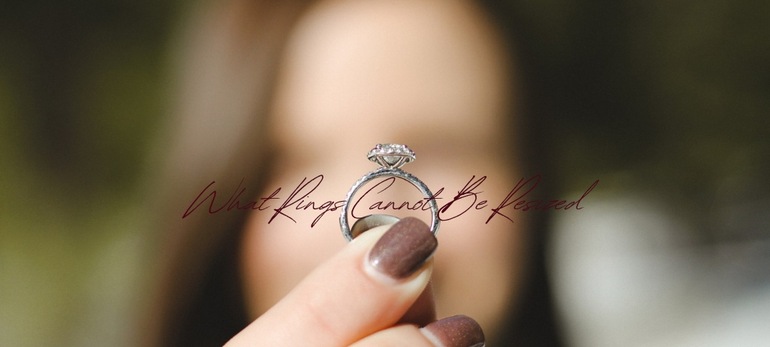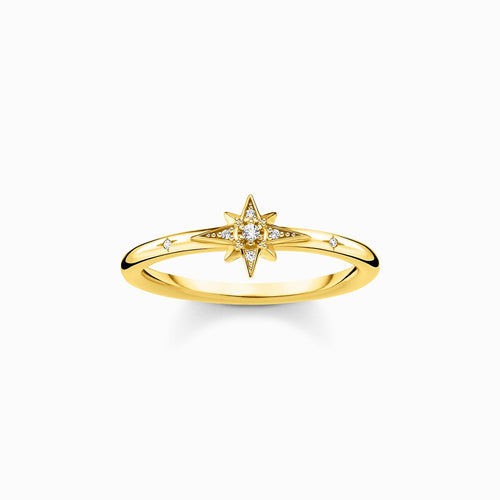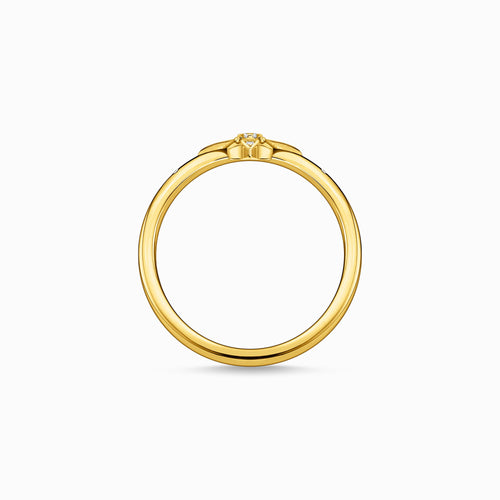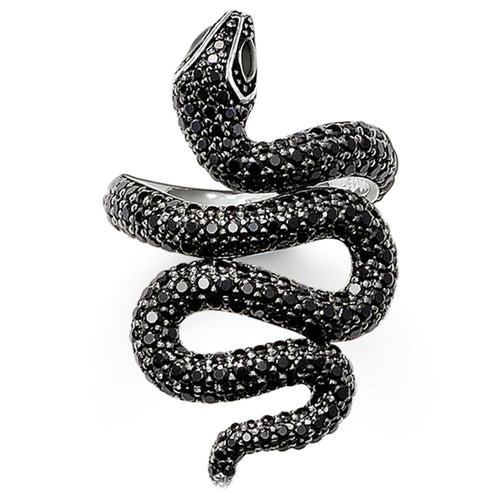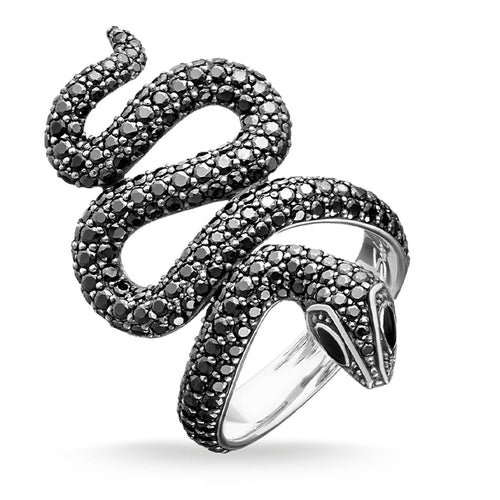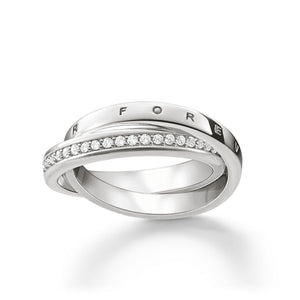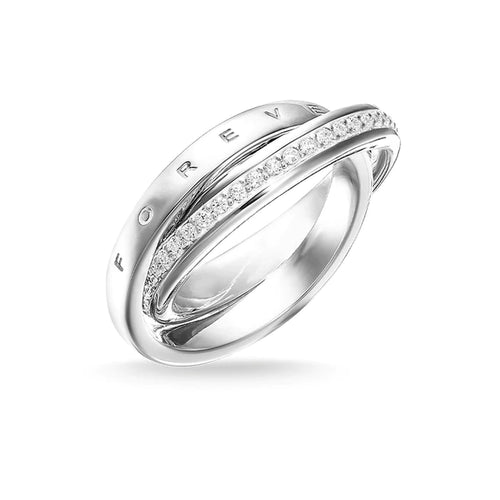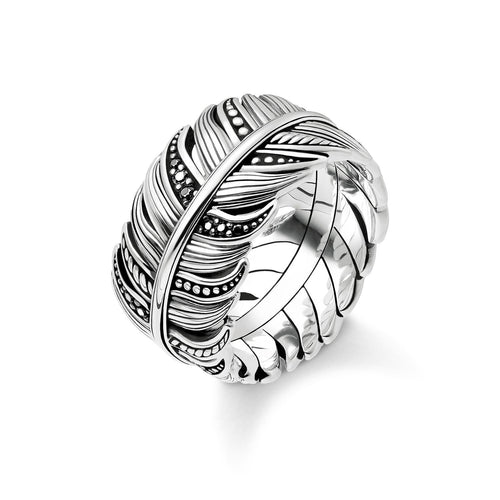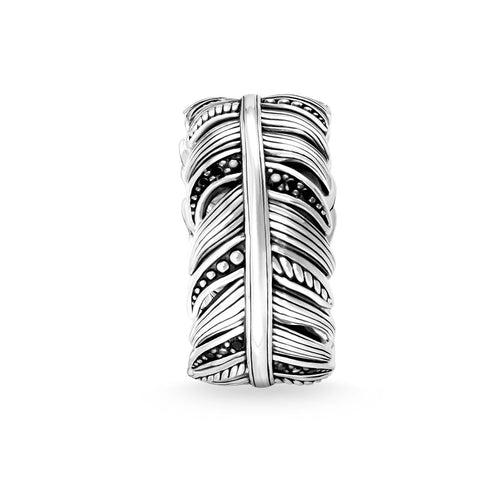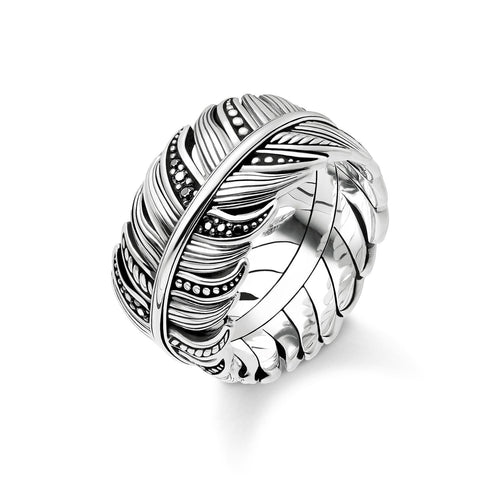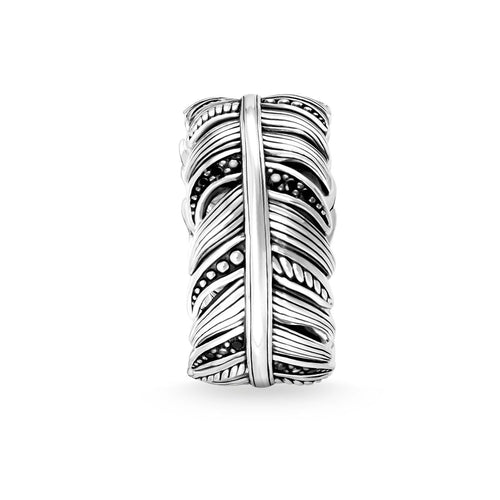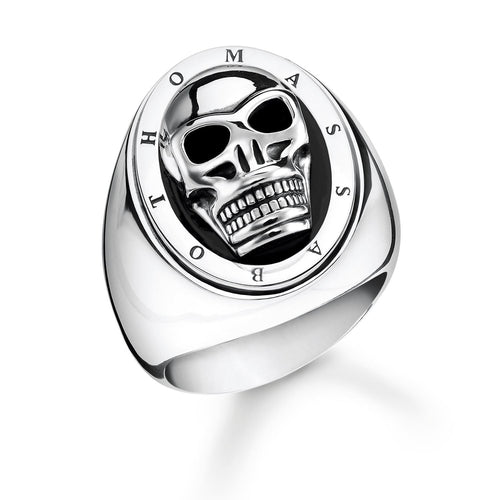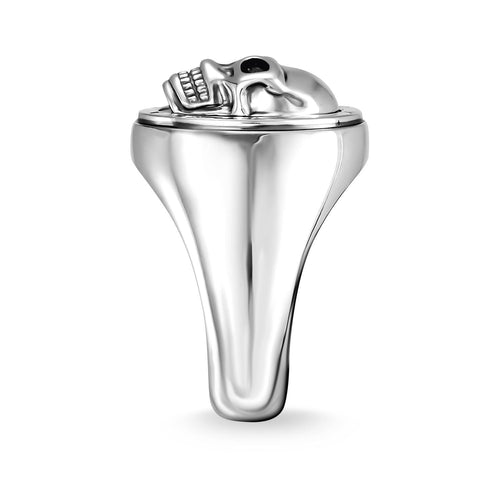Understanding ring resizing is crucial for anyone purchasing or owning rings. While many rings can be adjusted to ensure a perfect fit, certain rings cannot be resized due to their material or design. This knowledge is essential for making informed decisions when buying engagement rings, eternity rings, or wedding bands.
Key Takeaways:
-
Some rings, especially those made of titanium, tungsten, and stainless steel, pose significant challenges for resizing.
-
Rings with continuous gemstone settings, like eternity rings, are typically non-resizable.
-
Knowing the limitations of ring resizing can help you choose the right ring size and avoid future adjustments.
For a deeper understanding of which rings cannot be resized and the reasons behind it, this guide will provide valuable insights and practical advice.
What Rings Cannot Be Resized

When it comes to ring resizing, it's essential to know that not all rings can be resized. Understanding what rings cannot be resized will save you time, money, and potential disappointment.
Materials that are typically non-resizable include titanium rings, tungsten rings, and stainless steel rings. These hard metals are incredibly durable, but their strength makes them difficult to resize.
Here's a quick breakdown:
-
Titanium Rings: Known for their lightweight and durability, titanium rings are almost impossible to resize. If you need a different ring size, your best bet might be to purchase a new ring.
-
Tungsten Rings: Extremely tough and scratch-resistant, tungsten rings do not bend or resize easily. Similar to titanium, you'll likely need to consider other solutions if the fit isn't perfect.
-
Stainless Steel Rings: These rings are known for their strength and resistance to tarnish but can be difficult to resize without potentially damaging the entire band.
Design aspects that prevent resizing are another critical factor. For example:
-
Eternity Rings: These have stones set all around the band, making them impossible to adjust without disrupting the design.
-
Intricate Designs: Rings with elaborate patterns or gemstones intricately set throughout are challenging to resize because any modification might ruin the style or integrity of the ring.
For those looking to make their ring smaller with minor adjustments, consider alternatives like ring guards or sizing beads. These can help you achieve the correct size without altering the ring itself.
Consulting with a local jeweler is always a good idea. Most jewelers can provide insights into whether a ring can be resized and suggest alternatives if it cannot. They can guide you through the resizing process and ensure that any adjustments maintain the ring's beauty and durability.
In conclusion, knowing how many sizes and what rings cannot be resized helps you make informed choices. Whether you're buying an engagement ring, wedding band, or any other type of ring, understanding these limitations ensures you select the right fit from the start.
Titanium Rings

Titanium rings are popular for their remarkable durability and lightweight feel. However, these same properties make it difficult to make resize rings. If you're considering ring resizing for a titanium ring, you might be in for a challenge. Titanium is a hard metal that doesn’t bend or stretch easily, making the resizing process almost impossible without potentially damaging the ring.
Here are some key points about titanium rings:
-
Properties: Titanium is corrosion-resistant, lightweight, and hypoallergenic, which makes it a favorite for men's wedding rings and everyday jewelry. Its strength, however, means it cannot be resized like gold or silver rings.
-
Popularity: Due to their modern look and practicality, titanium rings are a go-to choice for many. They are especially popular for wedding bands and engagement rings.
If your titanium ring doesn't fit perfectly, there are still two sizes of solutions:
-
Ring Guards: These can help adjust the ring size without needing to alter the ring itself.
-
Sizing Beads: Small beads added inside the band can make a slightly larger size ring fit more snugly.
Despite these challenges, titanium rings remain a popular choice for those seeking a blend of style and durability. Consulting a local jeweler for advice and alternatives can ensure you get the right fit without compromising on the quality or integrity of your ring.
Ring Resizing: The Process and Challenges

Getting a ring resized is a common practice, especially when it comes to finding the correct size for an engagement ring or wedding band. However, the ring-resizing process is more complex than it might seem. Let's dive into the details and challenges of resizing a ring.
The Ring Resizing Process
Ring resizing typically involves either adding or removing a small piece of the metal band to adjust the size. Here’s a simplified breakdown:
-
Sizing Up: To make a ring larger, a jeweler will cut the band and insert an additional piece of metal. The ring is then soldered back together and polished to ensure a seamless finish.
-
Sizing Down: To make a ring smaller, a jeweler will cut out a small piece of the band and rejoin the ends. This process also involves soldering and polishing.
-
Final Touches: After resizing, the ring is cleaned, and any gemstones are checked to ensure they are secure.
Challenges in Ring Resizing
While the process sounds straightforward, several challenges can arise:
-
Material: Certain metals like tungsten, titanium, and stainless steel, are extremely difficult to resize due to their hardness. These rings cannot be resized easily and may require alternatives like ring guards or sizing beads.
-
Design: Rings with intricate designs or continuous stone settings, such as eternity rings, pose significant challenges. Resizing can disrupt the design or potentially damage the gemstone held in the band.
-
Gemstone Setting: Rings with multiple gemstones or delicate settings require extra care during resizing to avoid loosening or damaging the stones.
Commonly Resized Materials
Most jewelers can resize rings made from traditional metals like gold, silver, and platinum. Here are some properties:
-
Gold: Whether yellow gold, white gold, or rose gold, this metal is relatively easy to resize.
-
Silver: is another easily resizable metal, though it can be prone to scratching and tarnishing.
-
Platinum: Resizing platinum rings requires more skill due to its density, but it is still a manageable task for experienced jewelers.
In summary, while most rings made of traditional metals can be resized, understanding the limitations and challenges of traditional resizing methods and processes is crucial. Consulting a local jeweler can provide valuable insights and ensure your ring is resized safely and beautifully, preserving both its style and sentimental value.
Engagement Rings: Special Considerations

Choosing the perfect engagement and wedding ring is an exciting yet challenging task, and ensuring the correct size is crucial. Unlike other rings, engagement rings carry immense sentimental value, so getting the size right the first time is vital to avoid the hassle of ring resizing.
Importance of the Correct Size
An engagement ring should fit comfortably on the finger—not too tight or too loose. If the ring is too loose, you risk it slipping off; if it's too tight, wearing it can be uncomfortable and difficult to remove, especially if your fingers shrink or swell due to temperature changes.
Common Materials and Designs
-
Gold (yellow, white gold, and rose gold) and silver are popular choices for engagement rings and are relatively easy to resize.
-
Platinum rings are also a common choice due to their durability, though resizing them requires more expertise.
-
Titanium rings and tungsten rings are less common for engagement rings due to their difficult-to-resize nature. These hard metals offer durability but pose significant challenges if resizing is needed.
-
Eternity rings with stones set around the entire band are particularly difficult to resize, as altering the size can disturb the gemstone settings.
Tips for Ensuring the Right Fit
-
Get Professionally Measured: Visit a local jeweler to get your ring size accurately measured. This will give you the best starting point for ensuring a perfect fit.
-
Consider Seasonal Changes: Remember that your finger size can vary with the seasons. Fingers shrink in cold weather and swell in warm weather, so consider this when choosing your size.
-
Temporary Solutions: If the ring cannot be resized, options like ring guards or sizing beads can offer temporary adjustments without altering the ring.
-
Consult with Experts: Before making a final decision, consult with jewelers about the best material and design choices that suit your style and size requirements.
Getting the right fit for an engagement ring ensures that the special moment is perfect and hassle-free, keeping the focus on the joy and excitement of the occasion.
Ring Resized: What to Expect

When you get a ring resized, understanding the resizing process and what to expect can make the experience smooth and stress-free. Whether it's an engagement ring, wedding band, or any other precious piece, here's what happens during and after resizing a ring.
During the Resizing Process
-
Assessment: The jeweler will first examine the ring to determine if it can be resized. Tungsten rings, titanium rings, and stainless steel rings are typically difficult to resize and may not be suitable for adjustment.
-
Resizing: If the ring is resizable, the jeweler will either add or remove a small piece of metal. This involves cutting the band, making the necessary adjustments, and then soldering the band back together.
-
Finishing Touches: After resizing, the ring is polished and cleaned. Any gemstones are checked to ensure they remain secure.
After the Resizing Process
-
Fit Check: Ensure the ring fits comfortably. The correct size should slide on easily but be snug enough to stay in place.
-
Potential Risks: Resizing can sometimes weaken the metal or alter the ring's style. Discuss these risks with your jeweler to understand how they can be mitigated.
-
Maintenance: Regular check-ups with a local jeweler can help maintain the integrity of your resized ring, ensuring gemstones remain secure and the band stays strong.
Ensuring a Proper Fit
-
Use ring guards or sizing beads for minor adjustments if the ring cannot be resized further.
-
Always get professionally measured, considering seasonal changes when your fingers shrink or swell.
By understanding what to expect when getting a ring resized, you can ensure a proper fit and maintain the beauty and value of your treasured jewelry.
Specific Ring Types and Resizing Issues

When it comes to ring resizing, different ring sizes and types present unique challenges. Understanding these specifics can help you make informed decisions about your jewelry. Here’s a closer look at the issues associated with various rings.
Eternity Rings
Eternity rings are stunning, with stones set around the entire band. However, this continuous setting makes them incredibly difficult to resize. Any attempt to resize the eternity ring can disrupt the gemstone arrangement, potentially damaging the stones. If you must adjust the size, consider consulting a local jeweler for alternative solutions like ring guards.
Wedding Bands
Wedding bands come in various metals and designs. Gold (yellow, mostly white gold, and rose gold) and silver bands are relatively easy to resize using traditional resizing methods. However, bands with intricate patterns or gemstones might be more challenging. Always discuss the design with your jeweler to understand the best approach for resizing.
Tungsten Rings
Tungsten rings are known for their exceptional durability but are notoriously inflexible. This hard metal cannot be resized without risking damage. If you own a tungsten ring that doesn’t fit, you might need to purchase a new tungsten ring in the correct size. Alternatively, using sizing beads can help adjust the fit temporarily.
Platinum Rings
Platinum rings are prized for their strength and beauty. While resizing rings is possible, it requires a skilled jeweler due to the metal's density. The resizing process can be more expensive and complex compared to gold or silver rings. Despite these challenges, the durability and value of platinum rings make them a worthwhile investment.
Stainless Steel Rings
Stainless steel rings offer excellent durability and resistance to tarnish. However, their resizing flexibility is limited. Like tungsten and titanium rings, stainless steel is tough to adjust. If resizing is necessary, minor adjustments with sizing beads or ring guards might be the best option for most rings.
Understanding these considerations ensures you select the right ring size from the start and helps maintain the beauty and integrity of your precious jewelry. For any adjustments, always seek advice from experienced jewelers to ensure the best possible outcome.
Conclusion

Understanding what rings cannot be resized is essential for making informed choices. Titanium rings, tungsten rings, and stainless steel rings are examples of hard metals that cannot be resized easily. For engagement rings, wedding bands, and eternity rings, getting the correct size from the start is crucial to avoid the complexities of the resizing process.
If you need to adjust a ring, consider solutions like ring guards or sizing beads. Consulting with a local jeweler can provide valuable insights and ensure your ring, if it can be resized, maintains its integrity and beauty. Remember, while many rings can be resized, understanding the limitations and challenges will help you maintain the quality and sentimental value of your jewelry.
Whether you're dealing with gold, platinum rings, or other metals, always seek professional advice to ensure the best fit and longevity for your treasured pieces.
Frequently Asked Questions

1. Why can’t certain rings be resized?
Rings made from titanium, tungsten, and stainless steel are difficult to resize due to their hardness. Designs like eternity rings with stones around half size also cannot be resized without risking damage.
2. Can titanium rings be resized?
Titanium rings are incredibly tough and generally cannot be resized. If you need a different ring size, consider ring guards or buying a new, larger ring.
3. What are the alternatives to resizing a ring?
For rings that cannot be resized, options include using sizing beads or ring guards to achieve the correct size without altering the ring.
4. How do I know if my engagement ring can be resized?
Consult with a local jeweler to assess your engagement ring. Rings made of gold, platinum, or silver are typically resizable. However, rings with intricate settings or multiple gemstones may pose challenges.
5. Is it risky to resize a ring with gemstones?
Resizing a ring with gemstones can be risky, as it might loosen the stones. Always have a professional jeweler handle the resizing process to minimize potential damage.
6. What should I do if my ring doesn’t fit?
If your ring is too loose or tight, consult a jeweler for options. Ring guards or finger-sizing beads can provide a temporary solution if the ring cannot be resized.
Gift Ideas For You


